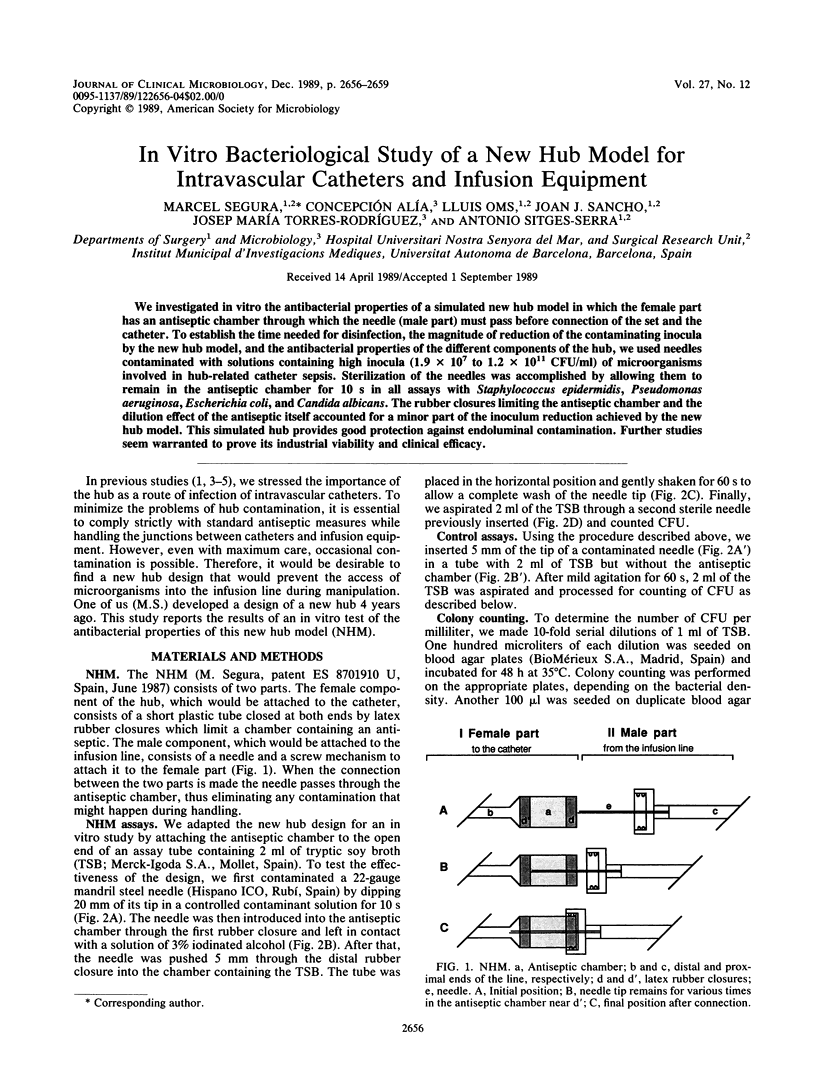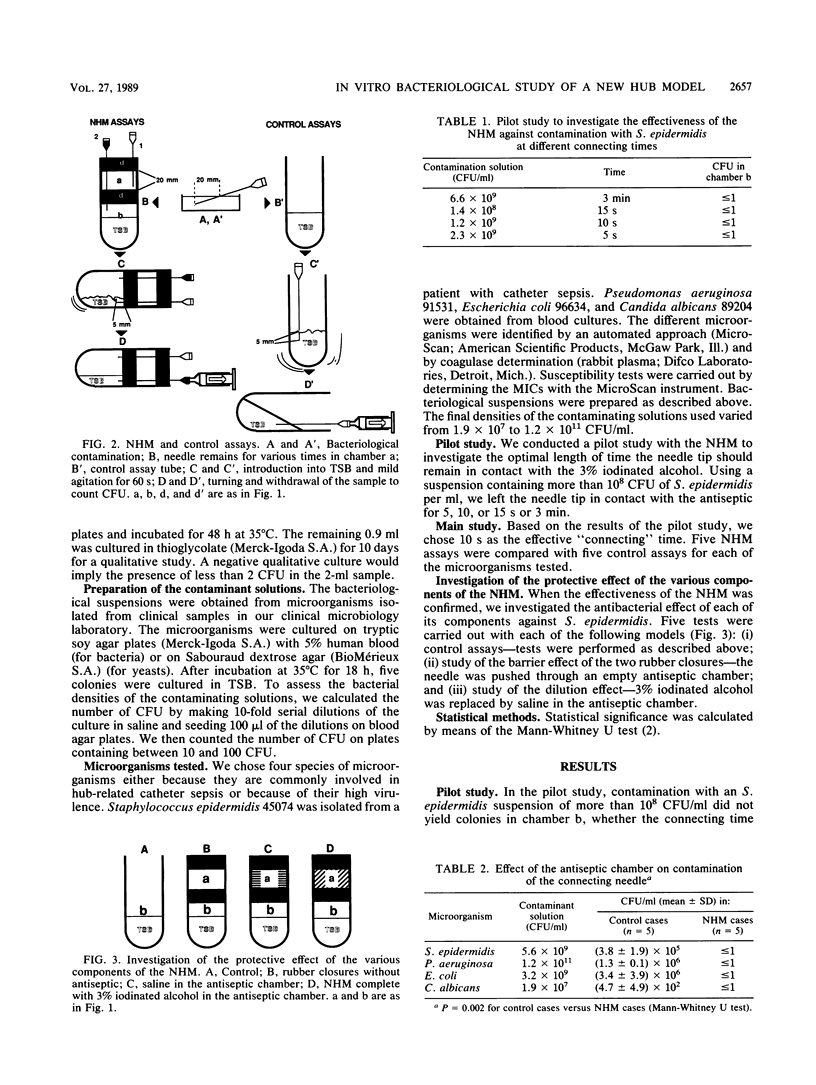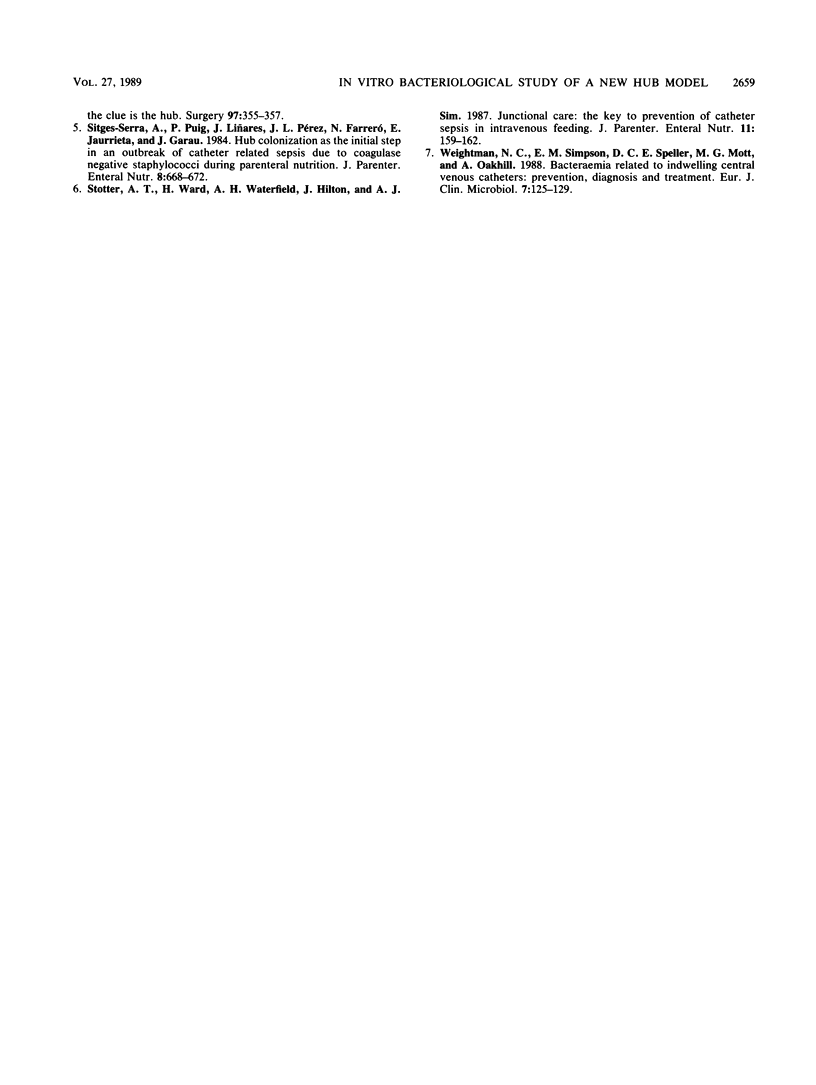Abstract
We investigated in vitro the antibacterial properties of a simulated new hub model in which the female part has an antiseptic chamber through which the needle (male part) must pass before connection of the set and the catheter. To establish the time needed for disinfection, the magnitude of reduction of the contaminating inocula by the new hub model, and the antibacterial properties of the different components of the hub, we used needles contaminated with solutions containing high inocula (1.9 x 10(7) to 1.2 x 10(11) CFU/ml) of microorganisms involved in hub-related catheter sepsis. Sterilization of the needles was accomplished by allowing them to remain in the antiseptic chamber for 10 s in all assays with Staphylococcus epidermidis, Pseudomonas aeruginosa, Escherichia coli, and Candida albicans. The rubber closures limiting the antiseptic chamber and the dilution effect of the antiseptic itself accounted for a minor part of the inoculum reduction achieved by the new hub model. This simulated hub provides good protection against endoluminal contamination. Further studies seem warranted to prove its industrial viability and clinical efficacy.
Full text
PDF



Selected References
These references are in PubMed. This may not be the complete list of references from this article.
- Liñares J., Sitges-Serra A., Garau J., Pérez J. L., Martín R. Pathogenesis of catheter sepsis: a prospective study with quantitative and semiquantitative cultures of catheter hub and segments. J Clin Microbiol. 1985 Mar;21(3):357–360. doi: 10.1128/jcm.21.3.357-360.1985. [DOI] [PMC free article] [PubMed] [Google Scholar]
- Sitges-Serra A., Linares J., Garau J. Catheter sepsis: the clue is the hub. Surgery. 1985 Mar;97(3):355–357. [PubMed] [Google Scholar]
- Sitges-Serra A., Puig P., Liñares J., Pérez J. L., Farreró N., Jaurrieta E., Garau J. Hub colonization as the initial step in an outbreak of catheter-related sepsis due to coagulase negative staphylococci during parenteral nutrition. JPEN J Parenter Enteral Nutr. 1984 Nov-Dec;8(6):668–672. doi: 10.1177/0148607184008006668. [DOI] [PubMed] [Google Scholar]
- Stotter A. T., Ward H., Waterfield A. H., Hilton J., Sim A. J. Junctional care: the key to prevention of catheter sepsis in intravenous feeding. JPEN J Parenter Enteral Nutr. 1987 Mar-Apr;11(2):159–162. doi: 10.1177/0148607187011002159. [DOI] [PubMed] [Google Scholar]
- Weightman N. C., Simpson E. M., Speller D. C., Mott M. G., Oakhill A. Bacteraemia related to indwelling central venous catheters: prevention, diagnosis and treatment. Eur J Clin Microbiol Infect Dis. 1988 Apr;7(2):125–129. doi: 10.1007/BF01963064. [DOI] [PubMed] [Google Scholar]


